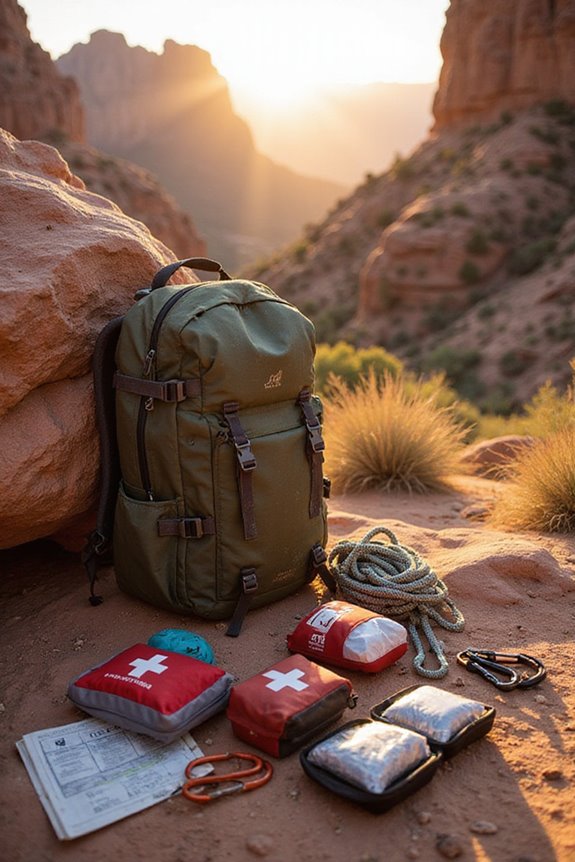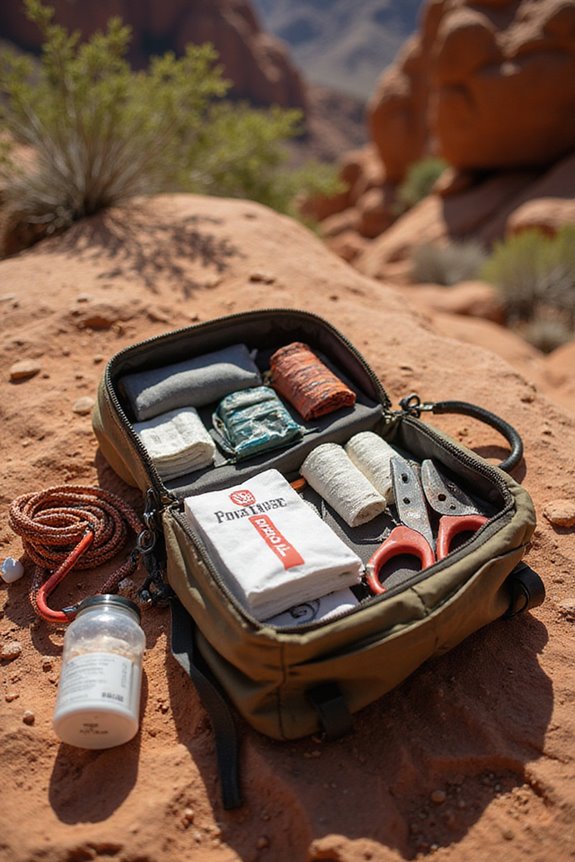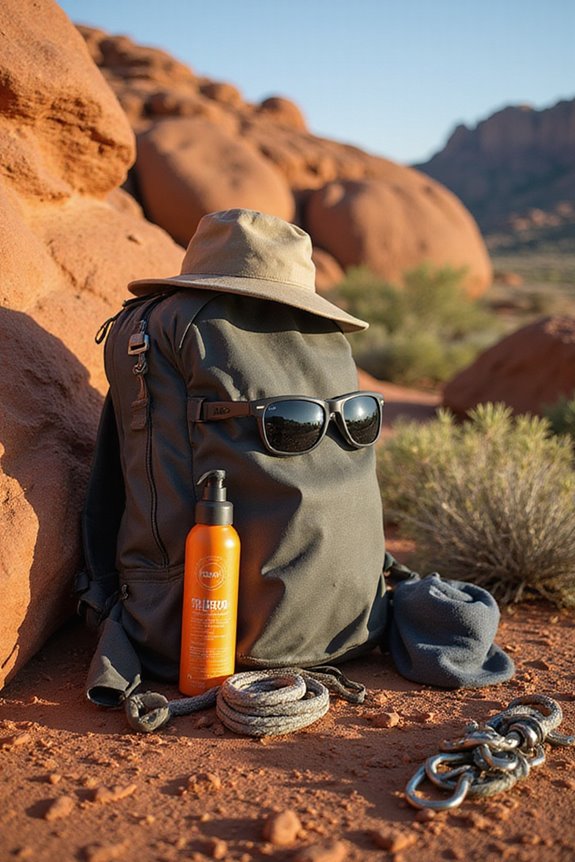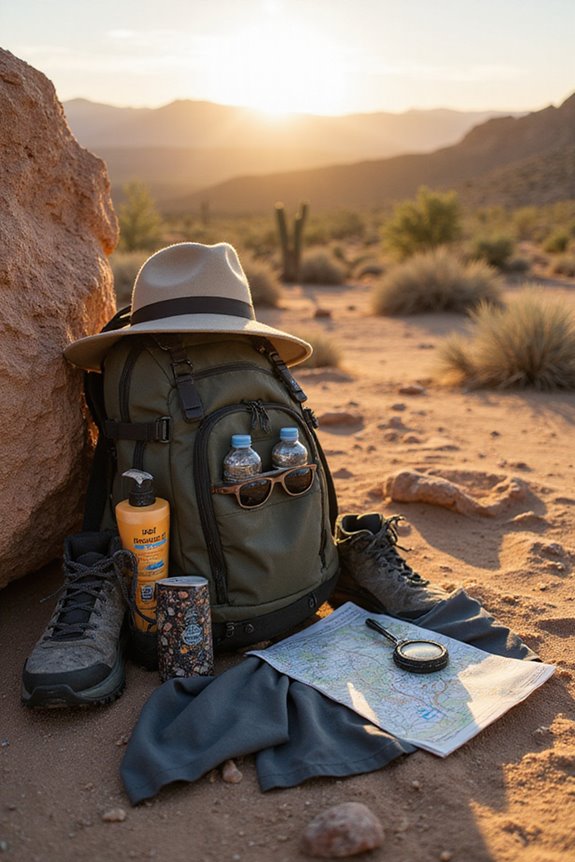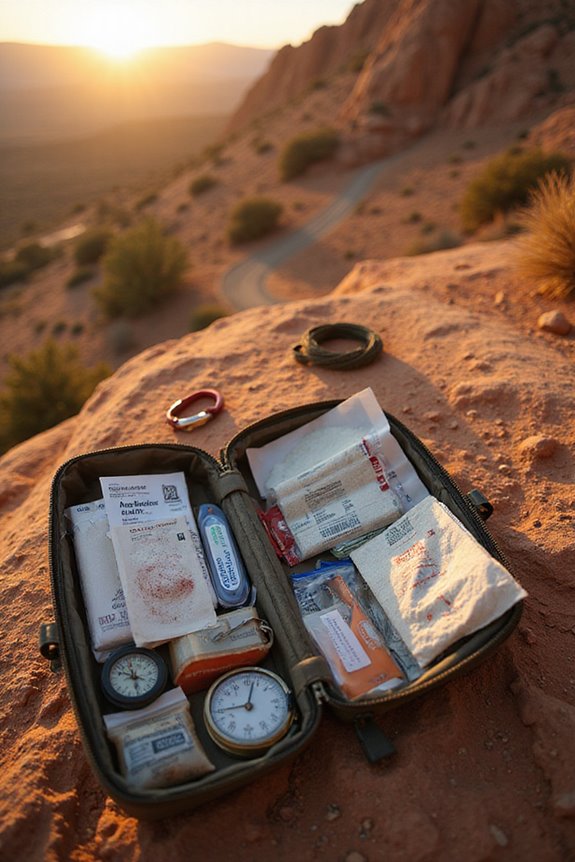When picking the perfect first aid kit, we’ve got to contemplate the type of adventures we’re planning! Class A is great for home mishaps, while Class B suits rugged trails or wild camping trips. Don’t forget key contents like adhesive bandages and burn dressings, and always check for freshness! Size and portability matter, too — we want a kit that fits our needs without weighing us down. Excited to learn more about keeping safe on adventures? Let’s plunge into!
Key Takeaways
- Assess the unique needs of your environment to determine the appropriate kit type (Class A or Class B) for your situation.
- Consider the size capacity of the kit to ensure it meets the needs of your group without being overly bulky.
- Choose a kit with customization options to allow for adding or replacing items based on specific activities and personal preferences.
- Regularly inspect and maintain the kit every six months to ensure all supplies are fresh and functional.
- Ensure compliance with OSHA and ANSI standards to adhere to safety regulations and avoid potential penalties.
Understanding Different Types of First Aid Kits
When it comes to first aid kits, we all want to be prepared for whatever life—or our adventurous hikes—throws at us. Choosing the right kit is essential! Class A kits are perfect for common workplace injuries—think scrapes and burns—whereas Class B kits tackle more complex scenarios, like those wild camping trips that can result in unexpected mishaps. You know the ones where you trip over a root?
Now, let’s break it down! We’ve got Type I for larger groups, Type II for homes, Type III for travel, and Type IV for rugged terrains. Each container is tailored to specific needs—durability, portability, or even water resistance. So let’s gear up and hit those trails with confidence! Look for kits with MOLLE-compatible designs which offer better organization and easy attachment to backpacks during outdoor adventures.
Key Contents of a First Aid Kit
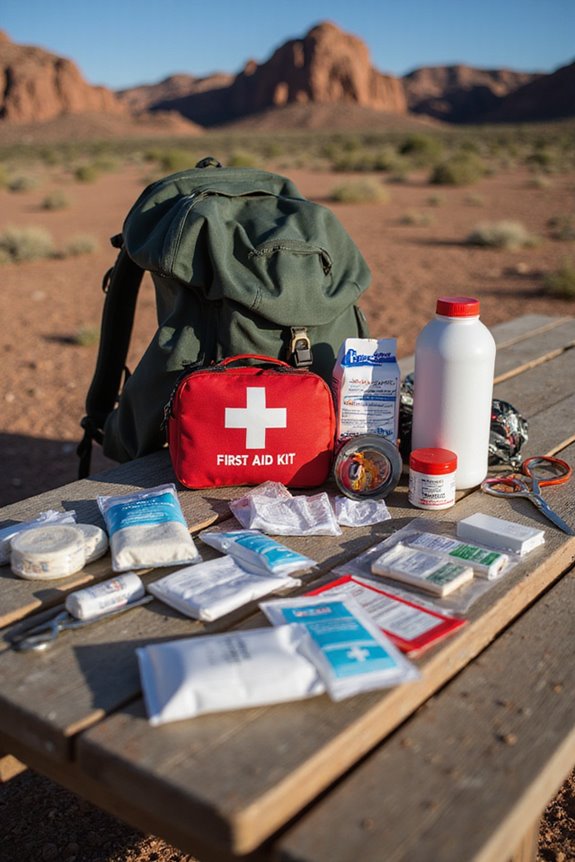
A well-stocked first aid kit is your trusty sidekick when outdoor adventures take an unexpected turn. We all know that accidents happen, and having essential supplies can make a world of difference. First, we need adhesive bandages for those pesky cuts and sterile gauze pads for serious wound management. Roller gauze and adhesive tape will secure everything in place while scissors and tweezers help us with minor surgeries—seriously, it’s like being our own medics!
Don’t forget the antiseptic wipes and burn dressings to keep infections at bay, plus eye wash solutions for those surprise encounters with flora. For optimal preparedness, choose kits with comprehensive supplies ranging from 160 to 299 pieces depending on your needs. With an all-encompassing first aid kit, we’re not just adventurers; we’re prepared explorers, ready to tackle anything that comes our way!
Factors to Consider When Selecting a First Aid Kit
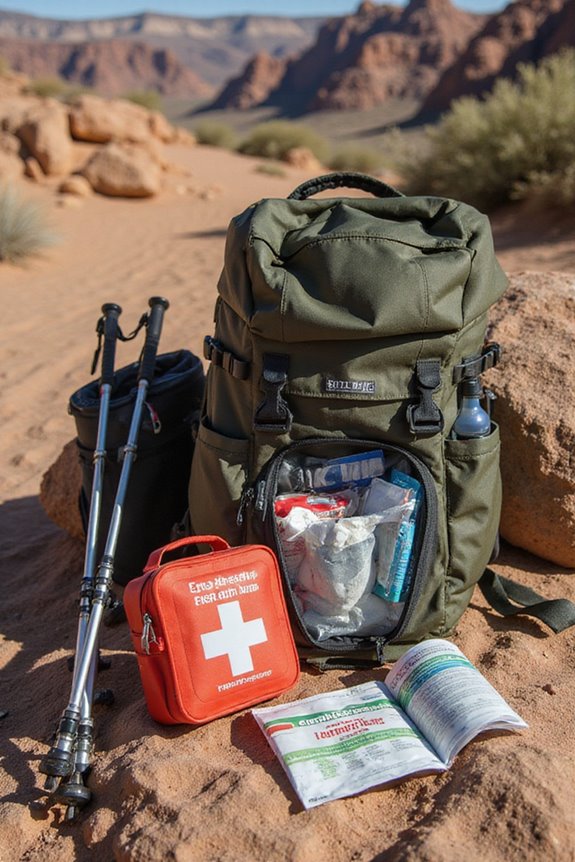
Finding the right first aid kit can feel a bit like hunting for the perfect hiking trail—it’s all about knowing what you need before you set out. We should think about size capacity first. Whether it’s for a solo adventure or a big group trip, we want enough supplies without the bulk. And let’s not forget customization options! Picking a kit that lets us add or swap out items can really tailor it to our needs. The terrain we explore and the activities we tackle influence our choice too. Maybe you’re hiking through rainforests or scaling rocky cliffs—both require different gear. Just like laminated checklists help prevent forgetting essential camping items, a comprehensive first aid kit ensures you’re prepared for emergencies in the wilderness. Stay smart and prepared, and you’ll be free to enjoy your adventures without worry.
Importance of Regular Maintenance and Inspections

While we may not think about it every day, the importance of regular maintenance and inspections for our first aid kits can’t be overstated! We recommend conducting inspections every six months as part of our inspection frequency. This simple act guarantees all supplies are fresh and ready, from bandages to antiseptics. Let’s keep a maintenance checklist handy to track expiration dates and replace any damaged items. According to experts, first aid supplies should be checked and replenished at least once a year to ensure your kit remains comprehensive and effective for emergencies.
Regulatory Compliance for First Aid Kits
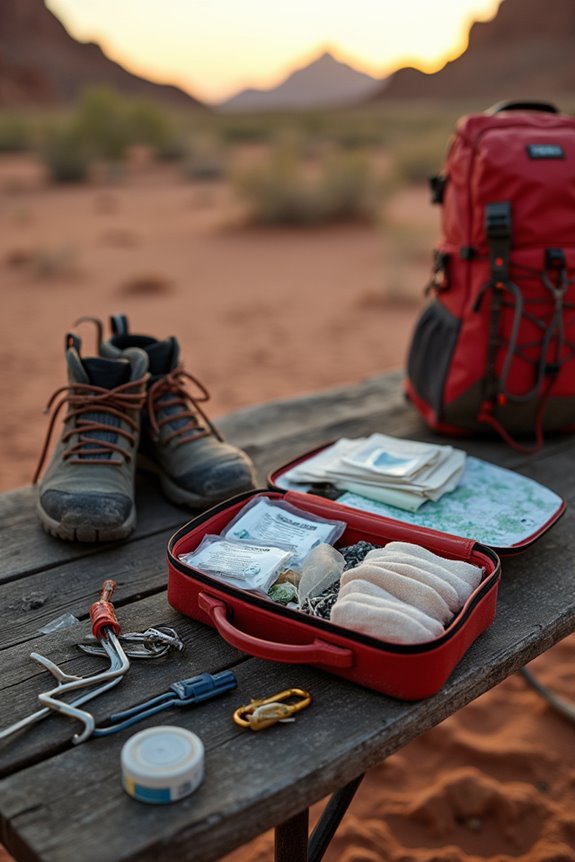
Regular maintenance of our first aid kits sets the stage for understanding the nitty-gritty of regulatory compliance. We’ve got to keep up with OSHA and ANSI standards—these guidelines help keep us safe and ready. Not meeting these regulatory standards can lead to compliance penalties that no one wants, especially when it comes to workplace safety.
Let’s remember, the type of supplies we pack depends on our unique environments. For instance, Class B kits cater to higher-risk areas, so if we’re tackling rugged trails or tricky climbs, we need to be extra prepared. When selecting medical supplies, consider options like the Protect Life Survival First Aid Kit that contains 100 essential pieces for addressing minor injuries in a compact design. Regularly checking our kits guarantees we’re ready for anything, keeping our hiking adventures not just thrilling, but also safe. After all, who wants to be caught unprepared?
Assessing Durability and Portability Needs
When it comes to hitting the trails, having a first aid kit that’s as tough as the adventures we take is absolutely essential. We want durable material selection—think waterproof cases and sturdy zippers. These features protect our supplies from moisture and impact, ensuring every essential remains intact.
Let’s chat transport options! Kits that are compact with shoulder straps or handles make carrying a breeze. Modular designs even let us grab just what we need without lugging a heavy load. Trust me, there’s a fine line between having enough supplies and feeling like we’re backpacking a boulder! By choosing a kit tailored to our adventures, we maximize portability without sacrificing durability, letting us roam free with peace of mind. Happy trails!
Frequently Asked Questions
How Do I Determine the Right Kit Size for My Workplace?
To determine the right kit size for our workplace safety, we should evaluate our employee count, assess potential hazards, and guarantee proper accessibility. It’s essential to balance availability without compromising space and efficiency.
Are There First Aid Kits Specific to Outdoor or Adventure Activities?
For outdoor adventures, we need specialized hiking kits and camping supplies tailored to our activities. By customizing our first aid kits, we enhance our freedom and safety in the great outdoors. Let’s be prepared!
What Should I Do if a Kit Item Expires?
When we notice expired items in our kit, let’s remove them immediately. Kit maintenance is essential; replacing these supplies keeps us prepared for any adventure, ensuring we’re ready to tackle emergencies with confidence and freedom.
Can First Aid Kits Be Customized for Specific Health Needs?
Custom kit options cater to specific health condition considerations, ensuring we meet unique medical needs. By personalizing our first aid kits, we empower individuals and organizations to prioritize well-being and safety in every situation.
Where Is the Best Location to Store First Aid Kits?
Storing first aid kits in our homes and offices should be strategic. We’ll place them in easily accessible spots, ensuring quick responses during emergencies, while keeping them safe from heat or humidity. Let’s prioritize readiness!

